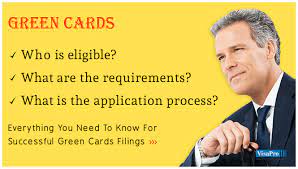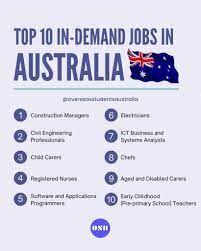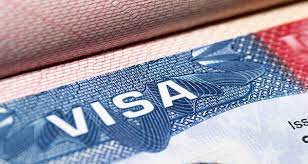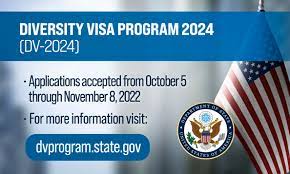How to Get A Green Card to Work in the United States.
Many immigrants often seek guidance on obtaining a green card to work in the United States. But what exactly is a green card, and why is it essential for working in the U.S.? Essentially, a green card grants an individual the privilege to live and work permanently in the United States.
Understanding Green Cards for Working in the United States. A green card is typically valid for ten years and requires renewal every decade. Moreover, a green card holder becomes eligible to apply for U.S. citizenship after maintaining lawful permanent resident status for five years. For more details on becoming a U.S. citizen, continue reading to learn how.
What Exactly is a Green Card?
A Green Card, formally known as a Permanent Resident Card or Form I-551, serves as concrete proof of an individual’s permanent residency status in the United States. Issued by the U.S. Citizenship and Immigration Services (USCIS), it validates that the cardholder has been granted the privilege to live and work permanently in the United States.
Green card holders enjoy various benefits, including indefinite residency in the United States, the freedom to work for any employer, pursue education, and travel outside and return to the country. Furthermore, green card holders are eligible to petition for U.S. citizenship after fulfilling specific eligibility criteria.
While a green card is typically valid for ten years and requires renewal, the application process varies based on eligibility criteria under categories such as employment-based, family-based, refugee or asylee status, among others.
Distinguishing Between Green Card Holders and U.S.
Citizens It’s important to note that a green card holder, also referred to as a permanent resident, differs from a citizen of the United States. However, individuals with a green card can petition for citizenship after residing in the country for a specified period. Exceptions are made for those who marry U.S. citizens or enter the country as refugees.
Green cards can be acquired through various avenues, including family ties, investment, refugee status, or other exceptional circumstances. Additionally, they can be obtained through employment opportunities in the United States. For more information on green cards and how to obtain one through employment, further details can be found here.
Types of Employment-Based Green Cards
Individuals seeking a green card through employment can apply from their home country once an immigrant visa number has been assigned to them. This is organized in accordance with the employment-based (EB) options listed below:
Types of Employment-Based Green Cards |
| First Preference (EB-1) |
| Second Preference (EB-2) |
| Third Preference (EB-3) |
| Fourth Preference (EB-4) |
| Fifth Preference (EB-5) |
First Preference (EB-1)
Individuals possessing exceptional talents, distinguished academics, professors, researchers, and international executives qualify for first preference permanent residency. Such individuals can demonstrate why they merit prioritization, utilizing evidence such as Pulitzer or Nobel Peace Prizes, athletic achievements, professional memberships, or publications. If you’re considering this route, learn more about finding a reputable immigration lawyer in the United States.
For the second preference (EB-2)
individuals with exceptional abilities or expertise, including advanced degrees, are eligible. Foreign nationals with a definite job offer can also seek a national interest waiver.
The third preference (EB-3)
It is designated for skilled workers and professionals. Typically, professionals need degrees from reputable universities, and employees must have at least two years of experience.
The fourth preference (EB-4)
It encompasses various exceptional immigrant categories, including workers in the religious sector, special immigrants for children, broadcasters, employees of international organizations, certain medical personnel, among others.
The fifth preference (EB-5)
It is available to immigrant investors willing to invest between $500,000 and $1,000,000 in a venture creating at least ten new jobs for US citizens or lawful permanent residents.
Here’s a simplified guide on obtaining a green card through employment:
- Determine Your Eligibility: Ensure you fit into one of the employment-based categories established by USCIS, such as EB-1, EB-2, EB-3, EB-4, or EB-5, based on your qualifications and circumstances.
- Find a U.S. Employer Sponsor: Secure a job offer from a U.S. employer willing to sponsor your green card application. Your employer will need to file a petition on your behalf with USCIS.
- File a PERM Labor Certification (for EB-2 or EB-3): Your employer must file a Program Electronic Review Management (PERM) Labor Certification with the Department of Labor (DOL) to ensure no qualified U.S. workers are available to fill the job.
- File an I-140 Immigrant Petition for Alien Worker: Once the PERM Labor Certification is approved, your employer will file an I-140 Immigrant Petition for Alien Worker with USCIS, confirming your eligibility for the chosen employment-based category.
- Wait for Priority Date to Become Current: Each employment-based category has a limited number of green cards allotted annually. Your priority date is established when your employer files the I-140 petition. Track availability on the Visa Bulletin published monthly by the Department of State.
- File an I-485 Adjustment of Status Application: Once your priority date is current, file an I-485 Adjustment of Status application with USCIS. This application requests a change from nonimmigrant to immigrant status and enables you to obtain your green card.
Application for a Green Card – The Procedure
The process of applying for a green card varies depending on the individual’s preferences and circumstances:
Option 1: In many cases, an employer will complete an I-140 approval notice, enabling them to hire a permanent foreign national. In some instances, individuals with exceptional talents may self-petition for an I-140.
Option 2: Upon approval of the petition, the foreign national can apply for a green card using Form I-485, Application to Register Permanent Residence or Adjust Status. This application permits the removal of any conditional restrictions on their status. If the foreign national’s priority date is current, they can submit both the I-485 and the I-140 concurrently.
The Green Card Lottery Program, formally known as the Diversity Immigrant Visa Program, offers another avenue for potential immigrants to gain permanent residency in the United States:
How The Green Card Lottery Program Works: Established in 1990, the annual lottery aims to ensure diversity in immigration. To be eligible, applicants must be natives of countries with low immigration rates to the US and possess suitable education or work experience, such as a high school diploma or two years of trade work experience.
Cost of The Green Card Lottery: Participating in the Green Card Lottery is free. Applicants must fill out and submit an electronic form on the official website of the US Department of State during the registration period. Although some companies may charge fees for assistance, utilizing such services does not enhance one’s chances of approval.
Various scams related to green cards and visas exist in the US, including:
- Green Card Lottery Commission Scams
- Fees for submitting government forms
- Providing assistance with visa applications
- Identity theft
- Service charges
To avoid falling victim to scams, individuals should:
- Be aware that the US government does not notify visa winners via email, and all visa-related communications come from ” .gov” email addresses.
- Apply directly through official US government websites ending in ” .gov” to avoid fraud.
Staying informed about updates on green card applications is crucial. Referencing USCIS Visa Bulletins throughout the year provides the most current information on eligibility and application procedures, helping individuals stay updated and navigate the process effectively.






